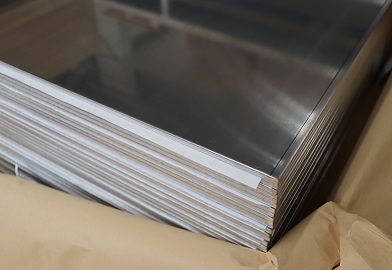Aluminum sheet and aluminum coil are both commonly used forms of aluminum materials, but they differ in their shapes and applications. Here are the main differences between aluminum sheet and aluminum coil:
Shape
Aluminum Sheet: Aluminum sheet is a flat, rectangular piece of aluminum material with a uniform thickness. It typically comes in standard sizes and thicknesses, ranging from thin sheets used for crafts or roofing to thicker sheets used in industrial applications.
Aluminum Coil: Aluminum coil, on the other hand, is a long, continuous roll of aluminum material wound onto a spool. It is typically produced in coil form during the manufacturing process and can vary in width and thickness.

Applications
Aluminum Sheet: Aluminum sheets are often used for applications that require a flat surface, such as building facades, automotive body panels, signage, roofing, and electronic enclosures. They can be easily cut and formed into specific shapes or sizes as needed.
Aluminum Coil: Aluminum coils are commonly used in applications that require long continuous lengths of aluminum, such as roofing, gutter systems, insulation jacketing, and automotive trim. They are also used in the manufacturing of various products where continuous lengths of aluminum are needed, such as beverage can stock and aluminum foil.
Processing
Aluminum Sheet: Aluminum sheets are typically produced by rolling ingots or billets of aluminum between large rollers to achieve the desired thickness. They may undergo additional processing such as annealing or surface treatments to enhance their properties.
Aluminum Coil: Aluminum coils are also produced by rolling ingots or billets of aluminum, but the process is continuous, resulting in a long coil of aluminum material. Coils may undergo further processing such as slitting, cutting, or coating before being used in various applications.

Handling and Transportation
Aluminum Sheet: Aluminum sheets are generally easier to handle and transport due to their flat shape and smaller size compared to coils. They are often packaged and shipped in individual sheets or bundles.
Aluminum Coil: Aluminum coils can be more challenging to handle and transport due to their large size and continuous form. They are typically transported on spools or reels and may require special equipment for handling and unrolling during processing.
In summary, while aluminum sheets and coils are both made from aluminum material, they differ in their shape, applications, processing methods, and handling characteristics. Each form has its advantages and is chosen based on the specific requirements of the intended application.


